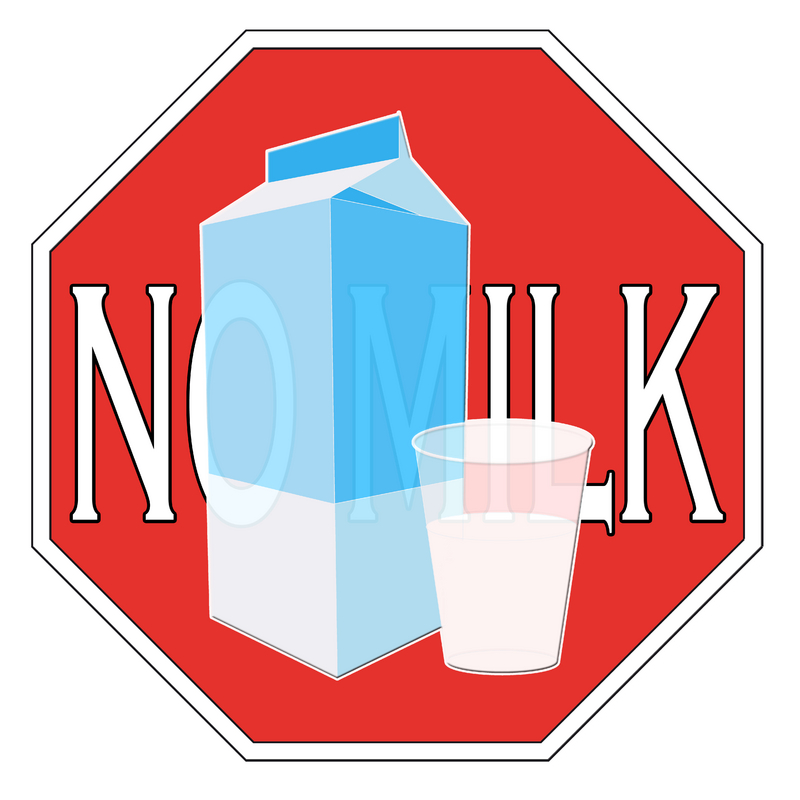We love dairy. It’s creamy and delicious! Plus, it’s essential to building strong bones, right? After all, our own government recommends that we consume two to three servings from the “milk group” every day.
It’s marketed to adults (think Dr. Phil with an ivory mustache), to teens (a 20-something siren so hot that her glass of milk explodes), and to kids (crazy colors entice them to chug). In fact, our culture views the consumption of milk so important – so essential – that every public school in the country is required to include a carton of milk with every school lunch sold.
Why is dairy so heavily promoted? Ask just about anyone and you will hear something to the effect of “We need milk for strong bones.” After all, dairy is loaded with calcium. But if dairy is so great for the bones, then why do countries that consume the most dairy also have the highest rates of hip fractures? And why is it that the Harvard Nurse’s Study with nearly 80,000 subjects found no evidence that consuming milk helps stave off osteoporosis – a conclusion that the majority of other large-scale studies on nutrition and disease-prevention share?
Osteoporosis is not a disease of calcium-deficiency
Calcium in the bones is a bit like money in the bank. If we want to save money we have to deposit money. However, it’s also important to not spend it. In fact, if we deposit a lot of money but spend it as it’s coming in, then we can end up with a very low balance.
This is a simplified analogy to what happens when we consume milk, yogurt and other dairy products. Indeed, dairy delivers calcium. However, it also causes us to “spend” calcium from our bones every single time we consume it, contributing to an overall lack of calcium in our bones.
To understand how this occurs we have to return to high school chemistry. Remember the pH scale? It ranges from 1 to 14, with 1 being very acidic, and 14 being very alkaline. Seven, right smack in the middle, is neutral. The pH of human blood is approximately 7.35. That’s alkaline, and our body works to maintain this alkalinity because an acidic environment leads to disease.
The amino acids in dairy in are high in sulfur, which is acidifying. Therefore, consuming dairy puts an acid-load on our blood. Our body has to neutralize this problem in order to keep our blood in an alkaline state, and the way that our body does this is by taking calcium from the bones and dumping it into the blood –because the calcium is alkalizing.
Through this process, our blood is kept in an alkaline state despite the fact that we consumed sulfur-containing amino acids. The drawback, of course, is that we lose precious calcium from our bones in the process.
So, milk contributes to osteoporosis. If this sounds strange, consider the fact that of approximately 4500 species of mammals, we are the only ones that continue to drink milk after the age of weaning. Plus, we curiously switch to the milk of another species. Interestingly, humans are also the only species that suffers from osteoporosis.
By the way, calcium that is released from the bones due to the consumption of dairy is ultimately excreted through the kidneys, leading to one of the most common forms of kidney stones. So, perhaps you are not concerned about osteoporosis if you are of the male gender. However, be aware that the milk in your latte and the provolone in your wrap promote excruciating kidney stones.
Upon hearing this information, many people naturally wonder if there are other foods that similarly put an acid-load on our blood. The answer is that all animal protein is high in sulfur-containing amino acids, so chicken, fish, beef, eggs and pork all contribute to this disease. In this manner, osteoporosis is better described as a disease of excess animal protein rather than one of calcium deficiency.
Eat Your Veggies…
…but don’t make them a side dish; make them your meal. Research shows that the higher your ratio of vegetable protein to animal protein, the smaller your risk for osteoporosis and other diseases. Basically, what it comes down to is that animal protein is acidifying and when we consume it we lose calcium from our bones in an effort to keep our blood in an alkaline state.
So why not choose vegetarian chili with guacamole instead of meat chili with sour cream – or have a grilled portabella mushroom with three bean salad instead of chicken tenders with ranch dressing. After all, these plant-based choices are deliciously satisfying and help prevent osteoporosis.
Sidebar: Plant-Based Sources of Calcium
Consumption of high calcium plant-based foods is an important component of osteoporosis prevention, along with avoiding salt and soft drinks, which are acidifying. To boost your calcium intake without putting an acid-load on your blood, ensure adequate Vitamin D, enjoy weight-bearing exercise every day, and build meals containing dark leafy greens (e.g. kale, boy choy, collard greens), cruciferous vegetables (e.g. broccoli rabe, cabbage, cauliflower), beans (e.g. pinto, kidney), tahini, and almonds.
Sidebar: Strong as an Ox
To gain a clear understanding of why dairy and other foods containing animal protein contribute to osteoporosis (along with a host of other diseases), educate yourself. After all, the ox is strong and it doesn’t drink pumped milk from cows like humans do; all it eats are plants. Start your research with T. Colin Campbell’s The China Study: The most comprehensive study of nutrition ever conducted and the startling implications for diet, weight loss and long term health.
Maribeth Abrams, MS is a Certified Nutritionist, Certified Lifestyle Educator, and author of two cookbooks loaded with “cheezey” non-dairy recipes. She has been dairy-free for nearly 20 years and is the mother of two teens dairy-free since conception.
